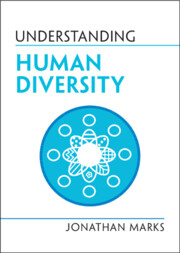Refine search
Actions for selected content:
119 results
Defective data: statistics, disability, and eugenic sterilisation in interwar Britain
-
- Journal:
- Medical History , First View
- Published online by Cambridge University Press:
- 18 July 2025, pp. 1-16
-
- Article
-
- You have access
- Open access
- HTML
- Export citation
Chapter 3 - Poor White People in the Eugenic Imagination
- from Part I - Whiteness and National Identity
-
-
- Book:
- Whiteness and American Literature
- Published online:
- 19 June 2025
- Print publication:
- 03 July 2025, pp 43-57
-
- Chapter
- Export citation
Chapter 15 - Whiteness and Food Studies
- from Part III - Approaches to Whiteness
-
-
- Book:
- Whiteness and American Literature
- Published online:
- 19 June 2025
- Print publication:
- 03 July 2025, pp 221-235
-
- Chapter
- Export citation
Chapter 11 - Realism and Race
- from Part II - Realism’s Keywords
-
-
- Book:
- Realism and the Novel
- Published online:
- 05 June 2025
- Print publication:
- 19 June 2025, pp 160-172
-
- Chapter
- Export citation
10 - “Euthanasia,” “Germanization,” and the Beginnings of Organized Mass Murder, 1939–1941
- from Part I - Structures, Players, and Processes
-
-
- Book:
- The Cambridge History of the Holocaust
- Published online:
- 21 May 2025
- Print publication:
- 12 June 2025, pp 238-261
-
- Chapter
- Export citation
19 - Nazi Biopolitics: Eugenics, Racial Policy, and the Persecution of “Asoziale,” 1933–1939
-
-
- Book:
- The Cambridge History of the Holocaust
- Published online:
- 16 May 2025
- Print publication:
- 12 June 2025, pp 393-419
-
- Chapter
- Export citation
11 - Race-Thinking, Völkisch-Nationalism, and Eugenics
-
-
- Book:
- The Cambridge History of the Holocaust
- Published online:
- 16 May 2025
- Print publication:
- 12 June 2025, pp 220-247
-
- Chapter
- Export citation
11 - Popes, Contraception, and Abortion
- from Part II - Women, Gender, Sexuality
-
-
- Book:
- The Cambridge History of the Papacy
- Published online:
- 28 February 2025
- Print publication:
- 20 March 2025, pp 330-348
-
- Chapter
- Export citation
11 - Race in the Global History of Europe
-
-
- Book:
- Globalizing Europe
- Published online:
- 06 March 2025
- Print publication:
- 13 March 2025, pp 159-180
-
- Chapter
- Export citation
1 - The Economics of American Greatness
-
- Book:
- The Greatest of All Time
- Published online:
- 23 January 2025
- Print publication:
- 06 March 2025, pp 10-46
-
- Chapter
- Export citation
Why we Must Change the Bioethical Terminology around So-Called “Lives Not Worth Living,” and “Worthwhile” and “Unworthwhile” Lives
-
- Journal:
- Cambridge Quarterly of Healthcare Ethics / Volume 34 / Issue 2 / April 2025
- Published online by Cambridge University Press:
- 10 February 2025, pp. 173-183
-
- Article
-
- You have access
- Open access
- HTML
- Export citation
Chapter 3 - The Utopian (R)Evolutionism of Grant Allen and Oscar Wilde
-
- Book:
- Evolutionary Aestheticism in Victorian Culture
- Published online:
- 05 December 2024
- Print publication:
- 12 December 2024, pp 85-121
-
- Chapter
- Export citation
Health Policy
-
- Journal:
- Social Philosophy and Policy / Volume 41 / Issue 2 / Winter 2024
- Published online by Cambridge University Press:
- 06 February 2025, pp. 295-305
- Print publication:
- Winter 2024
-
- Article
-
- You have access
- Open access
- HTML
- Export citation
8 - Social Evolutionism
-
- Book:
- Evolution for the People
- Published online:
- 21 November 2024
- Print publication:
- 28 November 2024, pp 186-216
-
- Chapter
- Export citation
9 - Unequal Encounters
- from Part III - Governance, Politics, and Self-Determination
-
-
- Book:
- Empire, Colonialism, and the Human Sciences
- Published online:
- 24 October 2024
- Print publication:
- 07 November 2024, pp 237-260
-
- Chapter
-
- You have access
- Open access
- HTML
- Export citation

Understanding Human Diversity
-
- Published online:
- 31 August 2024
- Print publication:
- 04 July 2024
5 - Swedish Social Democracy and Weimar
-
-
- Book:
- Weimar's Long Shadow
- Published online:
- 26 September 2024
- Print publication:
- 27 June 2024, pp 119-144
-
- Chapter
- Export citation
Chapter 2 - Transformations of the Maternal–Fetal Relationship in the Twentieth Century
- from Section 1 - Mapping the field’s past
-
-
- Book:
- The Handbook of DOHaD and Society
- Published online:
- 20 June 2024
- Print publication:
- 27 June 2024, pp 28-43
-
- Chapter
-
- You have access
- Open access
- HTML
- Export citation
10 - The Impact of the World Wars on Modern Sexuality
-
-
- Book:
- The Cambridge World History of Sexualities
- Published online:
- 26 April 2024
- Print publication:
- 16 May 2024, pp 204-226
-
- Chapter
- Export citation
21 - Sex in Early Twentieth-Century Berlin
-
-
- Book:
- The Cambridge World History of Sexualities
- Published online:
- 26 April 2024
- Print publication:
- 16 May 2024, pp 440-464
-
- Chapter
- Export citation
